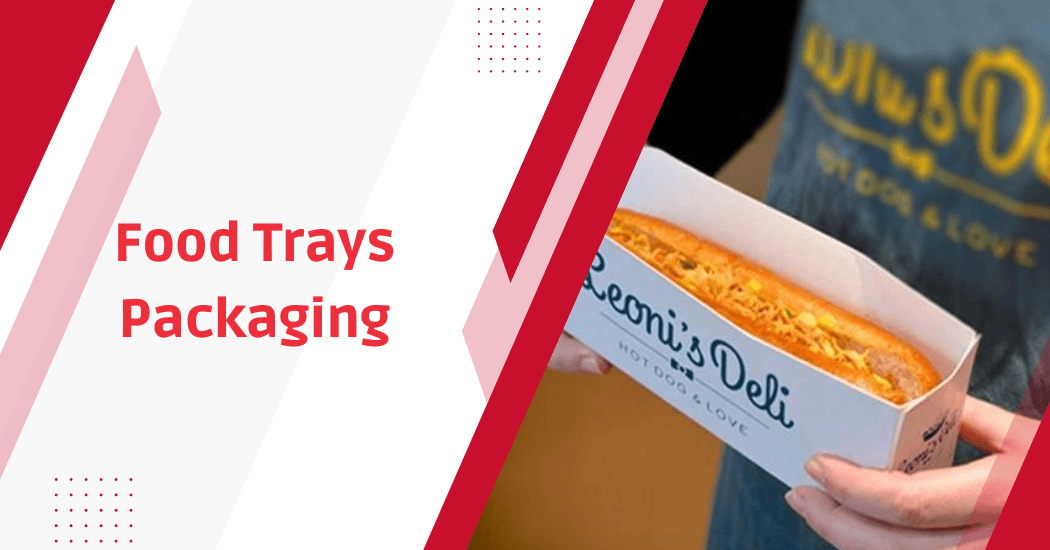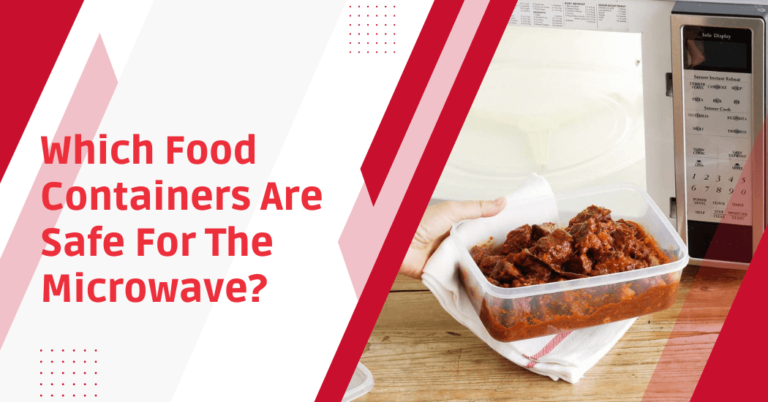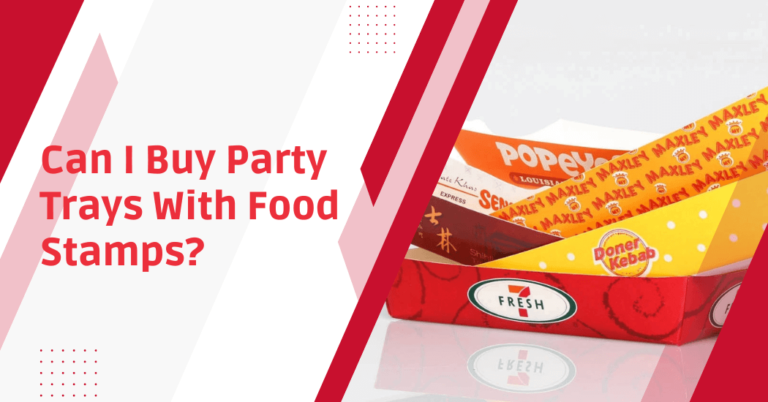How to package food trays?
Packaging is more than just putting food in containers. It’s about protecting the food, extending its shelf life and communicating what value you’re providing to customers.
Regarding packing food trays at my catering business, I’ve spent countless hours experimenting with different materials, designs and processes to create packaging solutions that achieve all these goals.
In this post, I want to share with you my best practices for packing food trays in a way that keeps dishes fresh, holds up during transportation and storage and leaves customers feeling impressed by the presentation.
Whether you run a corporate cafeteria, school kitchen or restaurant catering operation, following these packaging tips can take your food service to the next level.
Understanding Food Tray Packaging
In the world of food service, the variety of food trays available is vast, each designed to serve specific types of meals, snacks or beverages. The single-compartment tray is the simplest, ideal for single-item meals like a sandwich or a slice of pizza.
Multi-compartment trays come into play for more complex meals requiring the separation of components to avoid mixing flavors or textures.
These can range from two compartments to five or more, perfect for bento boxes, school lunches and multi-course meals. Then there are specialty trays, designed for specific types of food, like sushi trays with built-in sauce reservoirs or trays with lids designed for soups and stews to prevent spillage during transportation.
1) Materials used in food tray packaging
Selecting the right material for food tray packaging is pivotal in achieving the goals of freshness, durability and eco-friendliness. The most common materials include plastic, widely appreciated for its versatility and cost-effectiveness, though its environmental impact is a growing concern.
Biodegradable and compostable materials such as bagasse (sugar cane fiber), cornstarch and bamboo, are more sustainable, decomposing naturally without leaving harmful residues. Aluminum trays provide an excellent barrier against oxygen, light and moisture, preserving the food’s quality and are ideal for heat-and-serve options due to their oven-safe nature.
2) Considerations for packaging design
Designing your food tray packaging isn’t just about aesthetics; it’s about functionality, customer experience and sustainability. Key considerations include ease of opening and closing, particularly for customers who may be eating on the go or in environments like airplanes or hospitals.
Leak-proof designs are critical for liquid items, ensuring that meals arrive at their destination just as they were packaged. Sustainability is another major factor; using recyclable materials or designs that minimize waste can enhance your brand’s reputation and appeal to eco-conscious consumers.
Lastly, never underestimate the power of visual appeal; attractive packaging can enhance the perceived value of your food and make it more enticing to consumers.
Steps To Pack A Food Trays
Now that we have a better understanding of food tray packaging, let’s dive into the steps involved in packing food trays like a pro.
- Assess the meal components: Before selecting the appropriate food tray, consider the components of the meal you are packaging. Determine whether you need a single-compartment tray for straightforward dishes or a multi-compartment tray for meals with separate components. This step ensures the integrity of the meal’s presentation and taste.
- Choose the right material: Based on the nature of the food and your environmental priorities, select the material that best suits your needs. For hot meals or those requiring reheating, aluminum trays may be ideal. For cold dishes or eco-friendly packaging, consider biodegradable materials such as bagasse or bamboo.
- Focus on functionality and sustainability: Opt for designs that prioritize ease of use, such as easy-to-open lids and leak-proof seals, especially for liquid or semi-liquid foods. Also, consider the sustainability of the packaging. Look for recyclable or compostable materials to minimize environmental impact.
- Seal to preserve freshness: Ensure the trays are sealed properly to maintain the freshness and hygiene of the food. A well-sealed package prevents contamination, preserves the food longer and assures customers of the safety and quality of their meals.
- Label clearly: Label each package with essential information such as contents, allergen information, date of packaging and reheating instructions if applicable. A clear label not only complies with food safety regulations but also enhances customer trust and satisfaction.
- Test for transport stability: Before distributing the packaged food trays, conduct transport stability tests to ensure they hold up during delivery. This minimizes the risk of spillage and maintains the presentation of the meal upon arrival.
- Reflect your brand: Incorporate elements of your brand into the packaging design. Use logos, brand colors or unique packaging shapes to make your product stand out. This not only makes the food more appealing but also enhances brand recognition and loyalty.
- Deliver with excellence: When delivering food to customers, ensure that the packaging is intact and presentable. Consider adding small touches like utensils or napkins to enhance the overall experience.
Best practices & tips for food tray packaging
| Best practice/Tips | Explanation |
|---|---|
| Choose the right size | Select a tray size that matches the portion of the meal. Overly large trays can lead to unnecessary material use and a perception of insufficient food, while too small can cause spillage or damage to the food. |
| Ensure easy handling | Design packaging that is easy to carry, especially important for food delivery. Handles, secure lids and sturdy design can prevent accidents and ensure customer satisfaction. |
| Incorporate clear labeling | Clearly label trays with ingredients, calorie count, allergen info and reheating instructions. Transparency builds trust and aids those with dietary restrictions. |
| Opt for the stackable design | Stackable trays save space during transport and storage, reducing environmental impact and costs associated with logistics. |
| Prioritize seal integrity | A good seal keeps food fresh, prevents leaks and assures customers about the hygiene and safety of their meals. Consider tamper-evident seals to enhance trust. |
| Use sustainable materials | Opt for biodegradable, compostable or recyclable materials to minimize environmental impact. Indicate this on the packaging to appeal to eco-conscious consumers. |
| Maintain aesthetic appeal | Attractive packaging can enhance the perceived value of the meal and encourage purchases. Use vibrant colors, clear images and consider the unboxing experience. |
| Conduct Regular packaging reviews | Continuously seek feedback from customers and review packaging solutions to identify improvements in design, functionality and sustainability. |
| Innovate with technology | Explore advancements in packaging technologies, such as smart labels for freshness tracking or QR codes for accessing information about the meal and its preparation. |
Common mistakes to avoid when packaging food trays
- Using incorrect tray size: As mentioned, selecting the right size is crucial for efficient packaging. Using an oversized or undersized tray can lead to unnecessary material waste and impact the perception of the meal’s value.
- Poor seal integrity: A poor seal can result in leakage, contamination and spoilage of the food. Ensure proper sealing techniques and conduct regular quality checks to maintain seal integrity.
- Inadequate labeling: Failing to include essential information on the packaging can lead to food safety issues, dissatisfaction and lack of customer transparency. Always label trays clearly with relevant details.
- Neglecting sustainability: In today’s environmentally conscious world, using non-biodegradable or non-recyclable materials can harm your brand’s image and turn away potential customers. Prioritize sustainable options for packaging food trays.
- Not considering transport stability: Transporting packaged food requires careful consideration of the tray’s stability to prevent spills or damage to the meal. Conduct stability tests before distribution to avoid accidents and maintain presentation.
- Lack of branding elements: Packaging is an opportunity to showcase your brand and differentiate it from competitors. Neglecting to incorporate branding elements can make the meal seem generic and fail to attract customers.
- Ignoring customer feedback: Regularly seeking customer feedback and incorporating it into packaging solutions is essential for continuous improvement. Ignoring feedback can lead to repetitive mistakes and hinder progress in meeting customer needs.
- Not exploring innovative technologies: With advancements in packaging technology, it’s essential to keep up with new solutions that can improve functionality, sustainability and customer experience. Failing to explore these options can put your brand at a disadvantage.
FAQs – Food Tray Packaging
What is best material for food tray packaging?
Biodegradable, compostable or recyclable materials are recommended for food tray packaging. They minimize environmental impact and appeal to eco-conscious consumers.
How can I ensure the food stays fresh during transit?
Ensuring seal integrity with good seals or tamper-evident seals keeps food fresh and prevents leaks. Incorporating technologies like smart labels can also help track freshness.
What information should be included on the food tray labels?
Food tray labels should indicate ingredients, calorie count, allergen information and reheating instructions to build trust and aid those with dietary restrictions.
What are benefits of stackable food tray designs?
Stackable trays save space during transport and storage, reducing the environmental impact and costs associated with logistics.
How can I use technology to improve food tray packaging?
Exploring advancements in packaging technologies such as smart labels for freshness tracking or QR codes for accessing more information, can improve functionality and customer experience.
Wrap Up
Effective food tray packaging is a multifaceted process that necessitates attention to detail, creativity and a proactive approach to sustainability and technology.
By choosing the right size, ensuring easy handling, incorporating clear labeling, opting for stackable designs, prioritizing seal integrity, using sustainable materials, maintaining aesthetic appeal and regularly reviewing packaging practices, businesses can enhance customer satisfaction, reduce environmental impact and bolster brand recognition.
Avoiding common pitfalls such as incorrect tray sizes, poor sealing, inadequate labeling, neglecting sustainability, overlooking transport stability, ignoring customer feedback and failing to explore innovative technologies is equally important.
Through continuous improvement and a keen focus on the needs of both the customer and the environment, businesses can achieve excellence in food tray packaging, setting themselves apart in a competitive marketplace.






